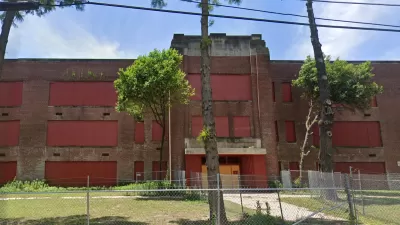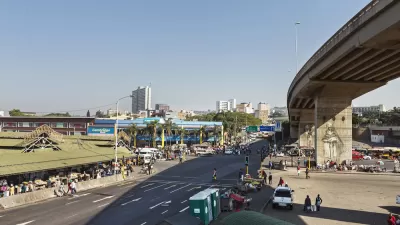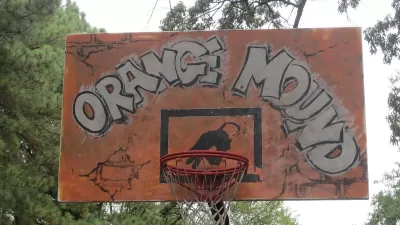In an interview with Crosstown Concourse's Todd Richardson, Thriving Cities explores the challenges of revitalizing and transforming Memphis' old Sears Roebuck Building.
On February 21, 2015, Crosstown Concourse officially broke ground in Memphis, TN. Originally built in 1927 and known as the Sears Crosstown Building, it operated as a Sears store for over 60 years until becoming vacant in the 1990s. Thanks to the recent efforts of many people such as Todd Richardson, new energy and investment has been poured into its revitalization. In an interview with Thriving Cities, Todd, who has been at the forefront of the project, highlights his work and hopes for Crosstown Concourse.
Thriving Cities (TC): Todd, describe your initial interest and motivations in getting involved with a project like Crosstown Concourse?
Todd Richardson (TR): What initially peaked my interest was a simple conversation. "Wouldn't it be cool if…?" It was 2009, and I had recently moved to Memphis to become a professor at the University of Memphis. While I love academia, it quickly became clear to me that I needed to get involved in the community in a more meaningful way. At the time, I didn't know what that might look like. But as an art historian, I understood the power of art to engage minds and build community. At 1.5 million square feet, the Sears Crosstown distribution center is the largest commercial building in the city of Memphis—by a long shot. It’s bigger than 25 football fields, bigger than the Chrysler Building in New York. But in spite of its art-deco beauty and central location, it had been abandoned for almost 20 years. I was talking with the building's owner. We said, "What if something amazing could happen at Sears Crosstown? And what if art were the catalyst?" That was enough to engage my research training, and I set out to determine whether anything like this had ever been done. Turns out, the power of art to spur community development has far surpassed my expectations.
FULL STORY: Memphis and the Crosstown Concourse — An Interview with Todd Richardson

Planetizen Federal Action Tracker
A weekly monitor of how Trump’s orders and actions are impacting planners and planning in America.

Congressman Proposes Bill to Rename DC Metro “Trump Train”
The Make Autorail Great Again Act would withhold federal funding to the system until the Washington Metropolitan Area Transit Authority (WMATA), rebrands as the Washington Metropolitan Authority for Greater Access (WMAGA).

The Simple Legislative Tool Transforming Vacant Downtowns
In California, Michigan and Georgia, an easy win is bringing dollars — and delight — back to city centers.

The States Losing Rural Delivery Rooms at an Alarming Pace
In some states, as few as 9% of rural hospitals still deliver babies. As a result, rising pre-term births, no adequate pre-term care and "harrowing" close calls are a growing reality.

The Small South Asian Republic Going all in on EVs
Thanks to one simple policy change less than five years ago, 65% of new cars in this Himalayan country are now electric.

DC Backpedals on Bike Lane Protection, Swaps Barriers for Paint
Citing aesthetic concerns, the city is removing the concrete barriers and flexposts that once separated Arizona Avenue cyclists from motor vehicles.
Urban Design for Planners 1: Software Tools
This six-course series explores essential urban design concepts using open source software and equips planners with the tools they need to participate fully in the urban design process.
Planning for Universal Design
Learn the tools for implementing Universal Design in planning regulations.
Smith Gee Studio
City of Charlotte
City of Camden Redevelopment Agency
City of Astoria
Transportation Research & Education Center (TREC) at Portland State University
US High Speed Rail Association
City of Camden Redevelopment Agency
Municipality of Princeton (NJ)





























